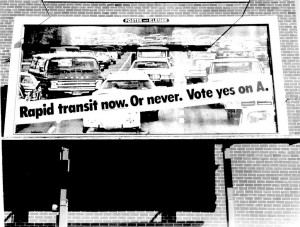Using Emotional Appeals in Written Advertising

It’s easier to communicate emotions through voice and body language than through writing.
Photo Credit: Kerr Photography
Emotional appeals are quite powerful in advertising because we often let our “gut” feelings trump our logical thoughts when it comes to making purchases. Consider the impulse candy rack at the supermarket–you didn’t come into the store looking to purchase a pack of gum and you probably didn’t think too much about it when you set it down on the conveyor belt either. You weren’t using rational thought; it was an impulse based on your emotional experience.
Unless your company sells candy, you probably don’t have the luxury of an impulse aisle to snag sales. Instead, you have to use emotions to make your customers give in to the impulse to buy your product or service.
Utilizing emotion is one of the most important aspects of advertising, but it can also be one of the trickiest. We feel emotions every single day and convey them through our speech and facial expressions without even having to think about it. Expressing emotional appeals through the written word, however, requires a little more forethought and strategy.
Identify the Emotions You Want to Express
The first step towards writing with emotion is to figure out what type of emotion best suits your brand. Begin by identifying what action you wish your audience to take. For example, let’s say you’re a heating and cooling expert and you want to inspire interest in your company’s services. There are a number of emotions that could achieve this; it could even be a mix of both positive and negative emotions.
The advertising for that heating/cooling company could use emotions relating to comfort to show how the company’s services keep your family warm and safe in the winter and cool and relaxed in the summer. However, the same advertisement could also invoke the negative emotion of fear–fear that something will go wrong with your system at an inopportune moment, which would be followed by relief that the company is always on-call for your emergencies.
You should also consider the different segments of your target audience and their various motivations. For example, part of your audience may be overly concerned with the safety of your product while others only care about whether it’s fun to use. You can appeal to the safety-conscious clients with feelings of security and reassurance, or you can focus strictly on the more easygoing ones with a sense of joy and happiness. For a broader approach, you could incorporate a combination of both examples into the same advertising campaign.
Knowing which emotions you want to invoke will make it easier for you to write copy that triggers responses from your audience.
Consider What Makes You Emotional
Once you know what emotions you want to inject into your copywriting, the next step is to find out what brings out that particular emotion in you. Think of past experiences when you felt that emotion and figure out what exactly made you feel that way. Jot down these different experiences and look for connecting patterns and constant variables.
However, don’t limit yourself only to personal experiences–think of the last time a movie made you cry or a commercial made you want to jump up and cheer. Study the ways that directors use images and words to make you experience an emotion and translate those concepts into your writing. As an exercise, gather up these different experiences and practice writing them out without any attention to your brand or product. Focus instead on conveying emotion through your words.

Emotionally charged language like “Everything Must Go!” calls the consumer to action.
Photo Credit: Tom Giebel
Use Emotionally Charged Words
The trick to advertising with emotional appeals is to walk the fine line between being informative and being emotional. However, the words you use should favor emotion more than information. That means cut back on the jargon and industry terms and focus more on words that paint a picture and inspire action. For example, it’s one thing to say you’re “having a closeout sale” and another to tell the audience that “everything must go!”
If you find your words are too stiff, take a second to analyze the emotions associated with what you want to say and adjust accordingly. If you have a limited time offer, then the emotion you want to convey is urgency and the need to act as soon as possible. Therefore, instead of saying it’s a “limited time offer” you can say something like “Hurry in while supplies last!” The second option makes the customer more likely to act on impulse instead of weighing out the pros and cons; the words conveyed the emotion of panic over being left out of the deal.
Expose Conflict, Then Reconcile
Sometimes the best way to illicit an emotional response is to actually address any emotional dissonance that the audience may have with your product or service–then find a way to reconcile those feelings. For example, if a ballet studio was having difficulty attracting male dancers, they could run an ad campaign that specifically targeted young men and addressed the embarrassment factor head-on. The campaign could feature a superhero, a professional wrestler and a male dancer, all wearing tights, with the copy “Real Men Aren’t Afraid to Wear Tights.”
This approach tackles the emotional response that young men have with ballet (primarily the fear that it’s a “girly” activity) and reconciles their fears by assuring them of their masculinity. Of course, taking this approach means you have to know what specific emotional dissonance is keeping potential customers from closing the sale so that you can better find ways of addressing the issue.

The best copywriting tells a story, such as this election billboard that depicts a possible future full of traffic if voters don’t vote on Prop A.
Photo Credit: Metro Transportation Library and Archive
Tell a Story
Storytelling has always been a popular choice for imparting wisdom and spreading knowledge since even before the invention of the written word. That’s because we allow listening to a story to be a cathartic experience, one where we can experience our own anger, sorrow or happiness in a safe way. Tell a story with your advertising by pulling from real experiences, using customer testimonials or even just depicting a hypothetical situation.
Consider the billboard to the right. It displays a picture of cars sitting in bumper to bumper traffic with accompanying copy that claims this could be a potential future if voters don’t vote yes on Prop A. The billboard connects to the audience on an emotional level because everybody has sat in traffic before. The copy brings these emotions to the surface, which makes the audience more likely to act to avoid the anxiety and stress of a future filled with traffic.
Conclusion
These are just a few examples of ways to put emotional appeals into your advertising, but all of them involve one crucial factor–empathy. Without being empathic to the needs of your audience, you will never be able to connect with them on an emotional level. Practice empathy in your everyday life and you’ll soon find it’s much easier to connect with people in your writing.
Posted in Copywriting
Don`t neglect your friends, share this right away.





Leave a Reply